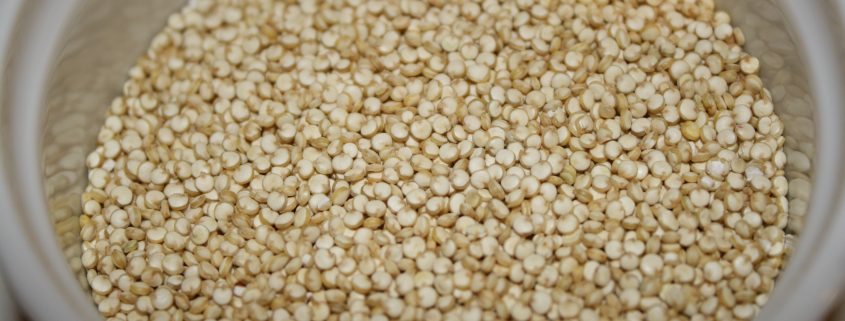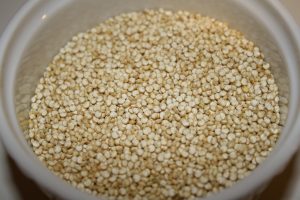Easy Ways to Get Your Family Aboard the Whole Grain Train!
Choo! Choo! There’s a new train in town, and it’s express to healthy-town! This train is the whole grain train, and it is ready for you and your family to step aboard!
To understand what a whole grain is, you must first understand the anatomy of a grain itself. A whole grain consists of 3 parts: the bran, the endosperm, and the germ. The bran is the outermost layer which contains fiber, B vitamins and minerals. The endosperm is the center layer and the largest and contains carbohydrates and proteins. The germ is the smallest part and the innermost and contains antioxidants, vitamin E, B vitamins, and healthy fats. The reason we should understand this is to clearly see how many nutrients these small grains have to offer. When they are milled, or refined, like our white breads and rice, both the bran and germ are stripped off, leaving only the endosperm! What a waste of the good stuff!
Because of the various nutrients whole grains have to offer, they provide us with just as many health benefits:
Reduces heart disease and stroke- Because of the high fiber content of whole grains, it helps to increase our good cholesterol and reduce our bad cholesterol, thus leading to a healthier heart and reduced risk of developing cardiovascular disease!
Reduces risk of certain cancers- According to the American Institute of Cancer Research, whole grains contain many nutrients that can play a role in reducing cancer risk, especially antioxidants. By also increasing your plant intake, you will lower your animal and meat intake which helps in preventing numerous cancers as well.
Reduces chance of developing diabetes- Studies have shown that individuals who consume more whole grains rather than refined grains are less likely to have diabetes. This may be due to the high magnesium content as well as replacing your simple sugar intake with complex carbohydrates.
Reduces obesity- Whole grains are packed with fiber which helps us stay fuller for longer and can curb your appetite!
Remember, at least half of your grains daily should be whole and you can be sure of this by the labeling under the ingredients list. Be warned, just because something is labeled “multi-grain” does NOT mean it contains whole grain. As long as it specifically states the word “whole” before the grain name, you are good to go! Some examples of whole grains to add to your diet today are: whole wheat, barley, bulgur, faro, millet, quinoa, and wheat berries.
The next train comes in soon; will you and your family be on board?



Hiya. Very cool website!! Man .. Excellent .. Amazing .. I will bookmark your website and take the feeds also…I am satisfied to find so much helpful information here in the post. Thank you for sharing..
My pleasure!
I just want to mention I am just very new to weblog and definitely loved you’re page. Very likely I’m want to bookmark your blog post . You absolutely have perfect articles. Regards for revealing your web page.
I actually like eating whole grain pasta then I do white pasta. If you cook whole grain pasta a little longer then it says to (like 15 minutes longer) then it gets as soft as white pasta and is very delicious. I am not talking about wheat pasta because it is nasty imo. It takes so long to cook and is tough. But if you make sure to get a premium brand that says whole grain on the front you are getting a healthy type of pasta that is maybe 50 cents more a box. Thats nothing to throw in to get something more healthier. So if you like white pasta, try the whole grain pasta out. I personally like the sea shell pasta myself. Its just as soft as white pasta and tastes great. I use to only eat white pasta myself up until a few years ago. I was very stubborn and said I would never get anything else. If I can make the change anyone can. Taste is whats most important to me sometimes too. I have made the same decision about brown rice